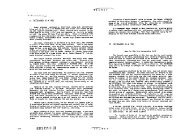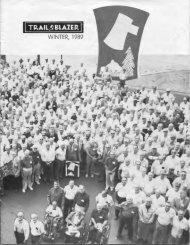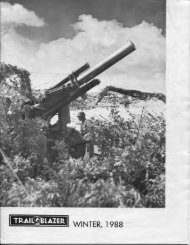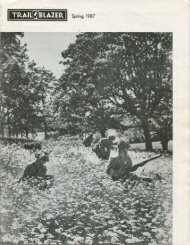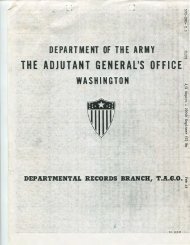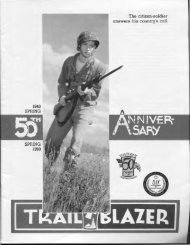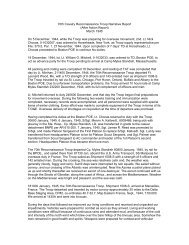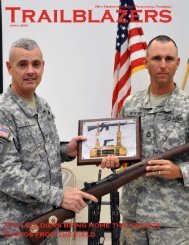Download - 70th Infantry Division Association
Download - 70th Infantry Division Association
Download - 70th Infantry Division Association
Create successful ePaper yourself
Turn your PDF publications into a flip-book with our unique Google optimized e-Paper software.
An example of the effectiveness of the enemy's mines was the inability of our AT Company to give<br />
assistance to Company B when that unit was meeting terrific resistance in the right side of Oeting. AT<br />
guns could not be brought up along the east side of the town because of a well-mined road.<br />
Neutralization of this section of road had to await the cover of darkness. This prevented an early knockout<br />
of the 88's and consequently made it possible to take Oeting the first day.<br />
Early in the morning of 18 February elements of B and C Companies reduced a bunker in the vicinity of<br />
Oeting. Otherwise the night passed without incident.<br />
It was decided that the following plan would be followed when the attack was resumed: A and C<br />
Companies to move forward in coordination with 274th <strong>Infantry</strong> on our right to capture high ground<br />
overlooking Forbach in the northeast corner of the Kleinwald; L Company to be attached to First Battalion<br />
and B and L Companies to move into Oeting, clear the city and take the high ground to the north of town;<br />
I and K Companies to remain in defensive positions southwest of Oeting, prepared to assist in taking of<br />
the high ground behind the town, or to advance north to take hills in the Kleinwald just south of Forbach.<br />
At 0645 L and B Companies again advanced on Oeting and this time moved rapidly through town, so that<br />
by noon it had been cleared entirely of enemy.<br />
A and C Companies, advancing on line with L of the 274th, passed across the hills north of Oeting and<br />
moved toward the previously stated objective in the Kleinwald overlooking Forbach.<br />
I and K Companies continued to hold the hill they had occupied southwest of Oeting and I Company sent<br />
out patrols to reconnoiter the woods in which the Third Battalion's next objectives were located.<br />
With the taking of Oeting, L Company was released from First Battalion control and reverted to the Third<br />
at 1315. When A and C Companies crossed the hills behind Oeting and took up a northwesterly direction,<br />
toward Forbach, they pinched out B Company, which reverted to First Battalion reserve.<br />
Now the units of the First and Third Battalions had all taken up the northwesterly move, heading for<br />
Forbach. But between them and that city were three imposing terrain barriers-hills covered by the thick<br />
woods of the Kleinwald.<br />
Most spectacular of the three was the ancient Schlossberg, red stone castle towering above a steep hill in<br />
the Kleinwald overlooking Forbach at the northwest edge of the woods.<br />
This structure, approximately 400 years old, was being used by the enemy as an observation post for<br />
adjustment of artillery and mortar fire.<br />
To the left of the high ground covered by the woods was a narrow valley, with flat floor, which could be<br />
covered by automatic weapons fire almost the entire distance from Forbach to the ground held by us just<br />
outside of Oeting.<br />
Thus, the obvious prerequisite to the taking of Forbach was capture of the high, wooded terrain<br />
immediately south of the city, and particularly the Schlossberg, since it was the most commanding point<br />
of observation in the entire area.<br />
By 1705 A and C Companies were on their objective, the wooded hill at the northeast corner of the<br />
Kleinwald, and half an hour later I and L Companies were half way up the southernmost hill of the<br />
Kleinwald, with K Company at the rear of I. During the day, transportation of supplies and weapons was<br />
difficult because of roads cratered by shellfire and the necessity of crossing the deep antitank ditch in<br />
front of Oeting.<br />
The Engineer Company was active throughout the day making routes of advance passable and bridging<br />
the ditch.<br />
Casualties for the 24-hour period ending at 1800 of 18 February were six killed and 28 wounded. Ninety<br />
prisoners were taken.



